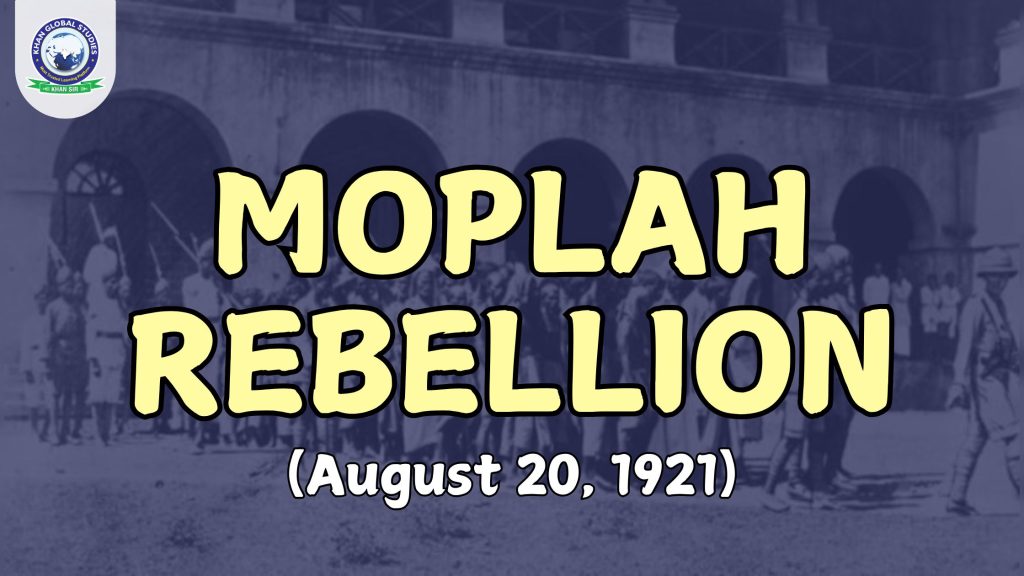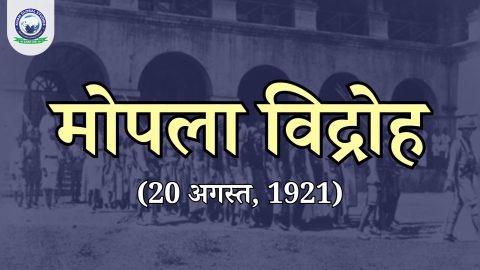The Moplah Rebellion, often referred to as the Moplah Rebellion, was a violent rebellion that took place in the Malabar region of Kerala in 1921. The event is an important, albeit controversial, chapter in Indian history, as it involved not only rebellion against British colonial authorities but also massacres and atrocities against local Hindu landowners and civilians.
Introduction
The Moplah Rebellion is considered one of the deadliest rebellions in the history of British India. What began as an anti-British conflict quickly spiralled into communal violence in the Malabar region. While some historians consider the event as part of the larger Indian freedom struggle, others consider it a well-planned conspiracy targeting Hindus. The rebellion left a bloody trail of destruction, with thousands killed and temples destroyed. To fully understand the complexities of the Moplah Rebellion, it is necessary to look at both the socio-political and religious factors that fueled the rebellion.
Beginning of the Moplah Rebellion
The Moplah rebellion began on August 20, 1921, in the Ernad and Valluvanad taluks of Malabar. It was initially linked to the larger Khilafat Movement, which aimed to protect the Ottoman Caliphate after World War I. However, it quickly turned into a large-scale massacre, with widespread violence against both British officials and Hindu landlords (zamindars).
Who were the Moplahs?
The term “Moplah” (or Mappila) was used to refer to the Muslim community living on the Malabar coast. By the early 20th century, the Moplahs became one of the fastest-growing communities in the region, with about 32% of Malabar’s population concentrated in South Malabar. Their discontent stemmed from a number of factors, including religious grievances and the repressive policies of the British.
Historical Background
The history of conflict between Moplah Muslims and Hindu landholders is very old, beginning with the arrival of the Portuguese in the 16th century. Portuguese commercial dominance affected the trading activities of the Moplahs, forcing them to look for alternative economic opportunities. Over time, this increased tensions between the Moplahs and the Hindu elites of the region, leading to future conflict.
How did the Rebellion start?
The rebellion was inspired by anti-British sentiments brewing in Malabar, especially after the Khilafat and Non-Cooperation movements of the 1920s. These movements, supported by Mahatma Gandhi, aimed to push for India’s independence from British rule while opposing the dissolution of the Ottoman Caliphate. Although initially supported by many Indian leaders, the rebellion took a violent turn, leading Gandhi and others to distance themselves from it.
Brutal Massacres and Communal Violence
One of the most disturbing aspects of the Moplah rebellion was the targeted massacre of Hindus. Moplah rebels, driven by anti-British and religious frenzy, attacked the Hindu community, including landlords and common people. The violence included mass killings, forced conversions, and the destruction of over 300 temples. The Moplah rebels also committed large-scale arson and looting.
Role of the British
By the end of 1921, the British government responded by deploying a special task force called the Malabar Special Force to suppress the rebellion. The British repression led to the arrest and hanging of thousands of Moplahs, effectively ending the rebellion by December 1921.
Wagon Tragedy: A Dark Chapter
One of the most tragic events associated with the Moplah rebellion was the Wagon Tragedy. In November 1921, 67 Moplah prisoners suffocated to death in a closed railway goods carriage while being transported from Tirur to Podanur Central Jail. The incident is widely remembered as one of the darkest moments of the rebellion.
Why is this in the News Today?
Recently, the Moplah rebellion has re-emerged in public discourse due to a political statement that compared it to the rise of the Taliban in Afghanistan. This comment has reignited the debate on whether the rebellion should be seen as a purely anti-colonial struggle or as an example of religious extremism.
Debate on the Moplah Rebellion
The Moplah Rebellion remains a polarising event in Indian history. While Marxist historians and some nationalist leaders consider it part of India’s freedom movement, others argue that it was primarily a communal massacre. The fact that thousands of Hindus were killed and forced to convert raises questions about its true nature.
Dr. B.R. Ambedkar mentioned the atrocities committed during the rebellion in his writings and condemned the mass killings and religious persecution. According to Ambedkar, the Moplahs engaged in the systematic slaughter of Hindus, which cannot be justified under the banner of rebellion.
Conclusion
The Moplah Rebellion of 1921 is a grim reminder of how communal violence can derail a movement for national liberation. Although it began as a protest against British rule, it ended in bloodshed, destruction and communal hatred. The massacre of Hindus, forced conversions and destruction of temples have left a dark legacy that is still debated today.
The Moplah rebellion raises important questions about how history should be remembered and interpreted. As we continue to explore this episode in Indian history, it is essential to balance the stories of the freedom struggle with the realities of communal violence.




